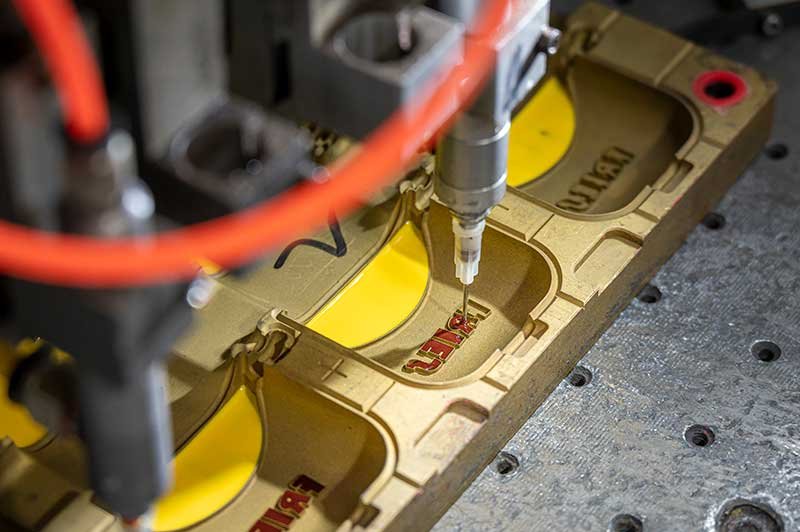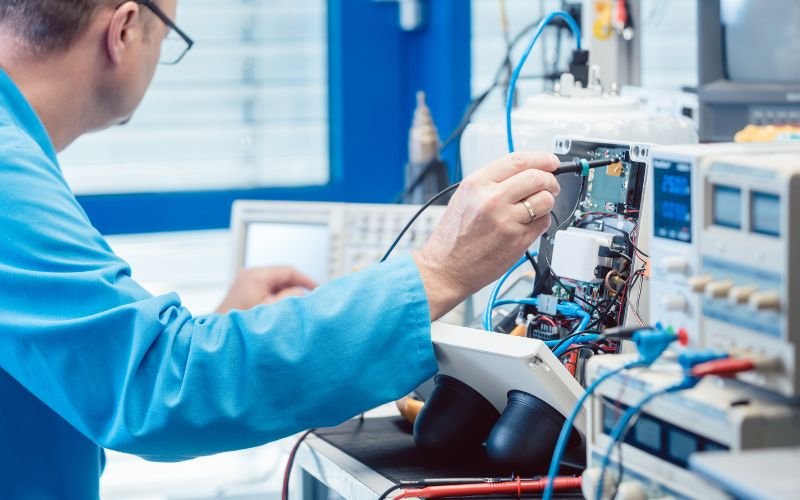Struggling to find the best silicone molding process for your intricate designs? You’re not alone—manufacturers across various industries face similar challenges. Creating parts with tiny details, complex shapes, or tight tolerances can be tricky, and many methods simply don’t provide the precision needed. That’s where high-precision silicone molding can make all the difference. This process ensures your designs are accurately replicated and meet strict quality standards.
High-precision silicone molding is an advanced technique that allows manufacturers to produce highly detailed and complex silicone products with remarkable accuracy. By using state-of-the-art molding techniques, it achieves incredible precision, even for the most challenging designs. Whether you’re working on medical devices, electronics, or custom products, this process ensures the final product remains true to your original design, with minimal errors.
Curious about how this technology can transform your production? Let’s take a closer look.
Why is precision critical in silicone molding?
Precision in silicone molding is vital for industries that require flawless, high-performance products. Medical and electronic applications, for example, often demand perfectly fitting parts with no room for defects. Even a slight variation in size, shape, or material thickness can result in a product that doesn’t work as intended. High-precision silicone molding ensures every detail is reproduced accurately, reducing risks and enhancing performance.
This level of precision is especially important in fields like healthcare, where silicone products—such as seals, gaskets, and valves—must adhere to strict regulations. Imagine creating a silicone gasket for a medical device that doesn’t fit correctly. Not only could it lead to malfunction, but it could also pose serious safety concerns.

How does high-precision silicone molding work?
High-precision silicone molding relies on advanced equipment and techniques to achieve exceptional detail and accuracy. Several key components contribute to this process:
1. Precision Tooling
The mold is the core of high-precision silicone molding. Using specialized software and precision machinery, molds are crafted to meet exact specifications. This is crucial for producing complex parts with unique or intricate geometries. These molds are designed to hold tight tolerances, ensuring that the final product meets precise measurements.
2. Material Selection
Choosing the right silicone material is essential. For high-precision molding, manufacturers opt for high-quality, medical-grade, or food-grade silicones known for their low shrinkage rates and durability. These materials ensure the finished product is both consistent and reliable, which is especially important in industries where safety and longevity are paramount.
3. Injection Molding
Liquid silicone rubber (LSR) is often used in high-precision silicone molding through an injection molding process. This method enables the rapid production of detailed and complex designs. The silicone is injected into the mold at high pressure and under controlled temperatures, allowing it to flow evenly into all cavities, capturing even the most intricate details of the design.
4. Quality Control and Inspection
High precision doesn’t stop at the molding process. After production, each part undergoes thorough quality control to ensure it meets exact specifications. This involves visual inspections, dimensional measurements, and functional testing to confirm that every piece performs as expected.
What are the advantages of high-precision silicone molding?
1. Complex Designs, Simplified
With high-precision silicone molding, intricate and complex designs become much easier to produce. Whether you’re working with fine details or challenging shapes, this process ensures your designs are replicated perfectly. The flexibility of silicone, combined with cutting-edge molding technology, captures even the smallest features.
2. Reduced Waste
Precision manufacturing often results in less waste. High-precision silicone molding allows for near-perfect parts on the first attempt, reducing the need for rework or discarded pieces. This cuts down on material costs and speeds up the overall production process by minimizing corrections.
3. Consistency and Reliability
When consistent performance is a priority, high-precision silicone molding delivers. Whether producing thousands of units or just a few prototypes, each piece will be nearly identical. This reliability is crucial in industries where even slight deviations can lead to failure.
4. Tight Tolerances
For products that require extremely tight tolerances—minimal variation from the desired dimensions—this process is ideal. High-precision silicone molding ensures the final product meets these strict tolerances, making it perfect for applications where the highest levels of accuracy are essential.
5. Durability and Longevity
Silicone is naturally durable, but when molded with precision, its reliability increases. Products created through this method are highly resistant to wear and tear, making them ideal for long-term use. This is especially important for items exposed to challenging conditions, like extreme temperatures, moisture, or chemicals.

What industries benefit from high-precision silicone molding?
Medical Devices
In the medical industry, precision is critical. High-precision silicone molding is used to manufacture components like seals, tubing, and connectors that must adhere to strict medical standards. These products need to be biocompatible, durable, and highly accurate to ensure patient safety and reliable device performance.
Automotive
Silicone is widely used in automotive applications such as gaskets, seals, and electrical components. High-precision molding ensures these parts can endure extreme temperatures and mechanical stress, contributing to the vehicle’s safety and overall performance.
Electronics
With the growing trend of smaller, more complex electronic devices, high-precision silicone molding is essential for creating components like connectors, switches, and seals. These parts must be detailed and precise to fit into modern electronics, where space is limited and performance is vital.
Consumer Goods
From kitchen utensils to baby products, high-precision silicone molding allows for the production of durable, non-toxic, and user-friendly items. These products often require intricate designs to improve functionality or aesthetics, and precise molding techniques are key to achieving this.
Industrial Applications
In the industrial sector, silicone parts are used in machinery, insulation, and safety equipment. These parts must withstand harsh conditions while maintaining their form and function. High-precision molding ensures these industrial components meet the necessary durability and performance standards.
How does high-precision silicone molding differ from traditional methods?
Traditional silicone molding methods, like compression molding, work well for simpler designs or larger parts, but they often fall short when it comes to more intricate designs. High-precision silicone molding, however, uses advanced tools, materials, and processes to deliver superior results in terms of detail, accuracy, and efficiency.
Greater Detail
Traditional methods struggle to capture the fine details that high-precision silicone molding can achieve. Advanced molds and injection processes ensure that even the smallest features of a design are replicated with precision.
Better Tolerances
While traditional molding is effective for general applications, it may have difficulty maintaining tight tolerances. High-precision silicone molding excels in achieving extremely tight tolerances, which is essential for industries that demand high accuracy.
Improved Efficiency
High-precision silicone molding offers faster production cycles and generates less waste than traditional methods. The injection process ensures efficient use of materials, resulting in a more cost-effective production approach.
What to look for in a high-precision silicone molding supplier?
When selecting a high-precision silicone molding supplier, it’s crucial to consider the following factors:
- Experience with Complex Designs: Choose a supplier with a proven track record of producing intricate, detailed parts successfully.
- Advanced Machinery: Ensure the supplier uses state-of-the-art equipment, including precision tooling and modern injection molding machines.
- Quality Assurance: The supplier should have strong quality control measures in place to guarantee that every part meets your exact specifications.
- Material Expertise: A knowledgeable supplier can recommend the right silicone material for your specific application, based on its unique properties.
- Customization Capabilities: Look for a supplier that offers flexible customization options to tailor the process to your precise needs.
Conclusion
High-precision silicone molding is a transformative solution for industries that require detailed, intricate, and dependable silicone products. Whether for medical devices, electronics, or consumer goods, this advanced process ensures that your designs are faithfully replicated with tight tolerances and exceptional durability. Whether you’re producing small parts or complex designs, high-precision silicone molding provides the precision, consistency, and efficiency needed to excel.